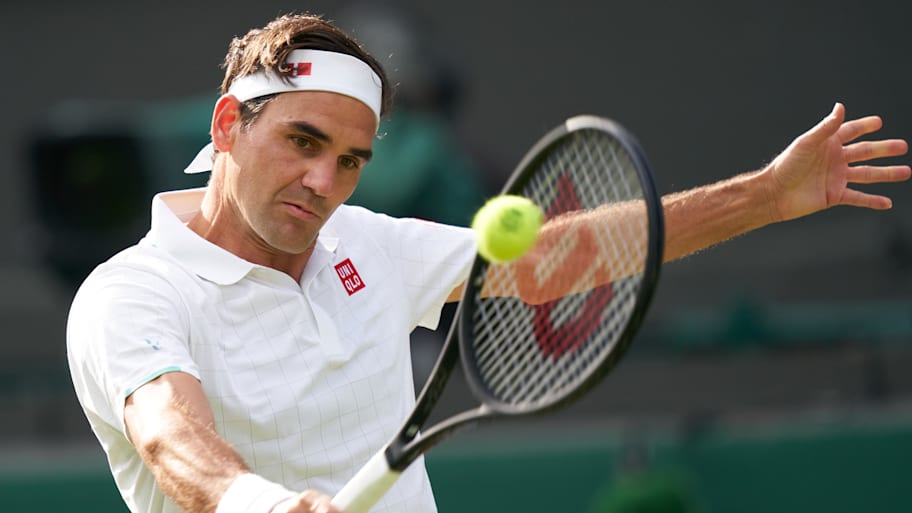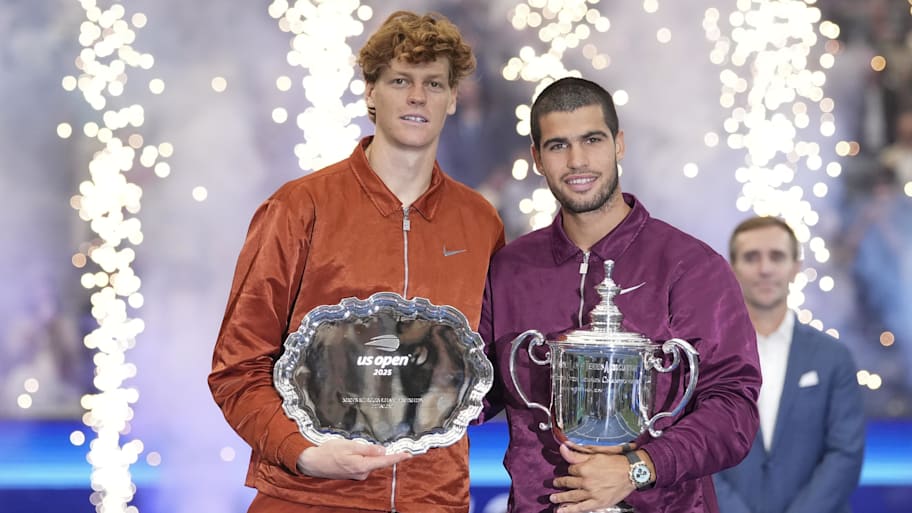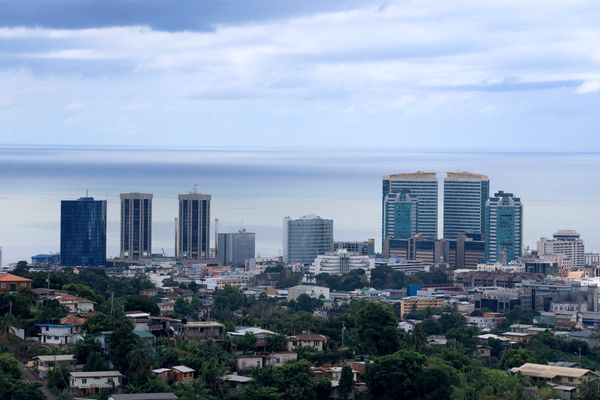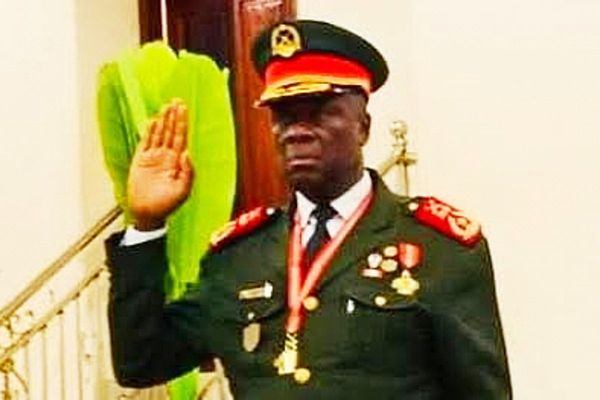
Submissions have been lightly edited for brevity and clarity.
Hey everyone …
• Here’s the latest Served podcast:
• In non-tennis news, here’s a piece on vaccine court (who knew, right?):
• A few of you have asked about this: If you have ideas or tips for 60 Minutes pieces, yes, by all means feel free to pass them on.
• This week’s unsolicited book recommendation is Stefan Fatsis’s Unabridged.
• If you haven’t read this Daria Kasatkina manifesto, do so.
Onward …
Jon, what are thoughts on the Tennis Hall of Fame nominees. It would be rude to ask who you are voting for, but who are you voting for?
Dennis Bass
• Yes, mere moments after last week’s mailbag was filed, the International Tennis Hall of Fame announced their class of 2026 nominees. Some initial thoughts:
A) I would have encouraged the HoF to give Roger Federer his own week. He’s such an extraordinary candidate—as are all players with 20 or more singles majors—that it tinges everything to have additional inductees that weekend. I was joking with another Hall of Famer about this. It’s like the Rock & Roll Hall of Fame saying Hey, everyone! We’re inducting De La Soul, Hall & Oates, and … The Beatles.
B) In the spirit of full transparency, or at least translucence, I am torn on the other two candidates. If we go by precedent, Svetlana Kuznetsova gets my vote. If one-time major winners who never got to No. 1, such as Michael Stich and Michael Chang got in, how do you turn away a two-timer? And Juan Martín del Potro is one of the great tragic what-ifs in tennis. But for his never-ending injuries, how many more majors would he have won? I would argue at least a few. Add in his tremendous 2009 U.S. Open, assorted other successes (some of which occurred a decade later), his Olympic heroics, his max out of good tennis citizen points and a total max out of the empathy quotient …
C) Yet, if we are serious about shoring up standards, shouldn’t reaching No. 1 in the rankings be a prerequisite? Shouldn’t you have reached more than two major finals? I’m getting soft in my mature age. I suspect both get in. But there’s a fundamental question here: Are we prepared to overturn precedent? Or is it so firm that we cannot break from it?
D) As for Mary Carillo, she’s in! I will vote for her early and often, and as many times as my Smartmatic machine will allow. (That was a joke.)
E) I didn’t know Marshall Happer personally and did not overlap with him, but this story presents a compelling case.
F) Here’s what I don’t understand about the Hall of Fame: People complain about the standards, about players who are awesome and had estimable careers but are the equivalent of .295 hitters, about players who never reached No. 1 getting voted in. The consensus is that other sports’ Hall of Fames have stricter standards for admission.
But other sports have many more slots for “contributors.” Check out basketball, for instance. Why would tennis only have contributors every other year? Think of all the folks who, well, contributed so much. Three off the bat: Darren Cahill, Oracene Williams (arguably the most decorated coach in tennis history) and Craig Tiley. Why would tennis—a vibrant, global sport with so many varied behind-the-scenes heroes and heroines—not do more here?
Jon, all of the top players complain that there are too many mandatory tournaments and that the tennis season is too long but then participate in the Laver Cup—an optional alleged tournament only recently added to the tennis calendar. Fernando has a very difficult time reconciling this apparent dichotomy. BTW, why aren’t the appearance fees disclosed? Shouldn’t fans have a right to know?
Fernando
• I will always favor more disclosure. But what about a blanket rule that ALL appearance fees are revealed? If the organizers are to be coy, we will have to rely on informed speculation and secondary sourcing. Like the one who told me, “Carlos Alcaraz isn’t crossing the street for less than two million dollars these days. And Jannik Sinner isn’t far behind.”
As for the hypocrisy, yes, when players complain about the length of the schedule and the demands of the tours, it undermines their argument when they participate in other events and exhibitions during the free weeks.
But let’s acknowledge that there’s a difference between sanctioned and unsanctioned events. Even if players were to give the same effort, there is a wear-and-tear difference between a one-night-only—where you know the opponent in advance, you know the precise match time, there’s no next round the following day, there are no points to defend—and a run-of-the-mill tour event.

Jon, like you, I am enjoying the Sinner-Alcaraz rivalry. But not even Federer/Nadal/Djokovic met in THREE straight major finals. Who is the person most likely to come along and challenge them? Because I sure don’t see anyone!
Cecilia T.
• This is one of the—maybe the?—great existential questions in men’s tennis. Sinner and Alcaraz are atop the mountain. Who is going to get up there with them (or drag them down)?
Alexander Zverev is ranked No. 3 right now, but for reasons discussed last week, he ain’t it. Bless Novak Djokovic and his persistence and admirable longevity, but even his most ardent fans cannot deny that he is 38. On the other end of the spectrum, João Fonseca is a beast-in-training, but we need to put a wedge in the wheels of the hype train and acknowledge he remains outside the top 40 and still needs some seasoning. Jack Draper? He has lots of upside, but one wonders about his durability. Taylor Fritz is an admirable player, but over the past four years, he is 0–8 against Sinner and Alcaraz outside of the Laver Cup. Shall we keep going? Ben Shelton and his lefty heat and athleticism? Holger Rune? Casper Ruud? Félix Auger-Aliassime?
From the two-things-can-be-true-at-once department: We can regale and rejoice in the rivalry—two superior players who, reliably, face each other in major finals—and, also, wish a player mounted a challenge, à la Djokovic circa 2011.
A few of you roasted me last month for suggesting that, while no ranking points were on the line, Fritz would take a measure of confidence from beating Alcaraz 6–3, 6–2 in San Francisco. Credit where it’s due: The skeptics were correct when, barely a week later in Tokyo, Alcaraz turned the tables 6–4, 6–4.
The Slam prize money machinations and negotiations are a big story. Thanks for keeping it on the radar. Why does a cocktail get 100x the coverage as this major issue?
Meganfernandez7
• Tennis players need that magic dash framboise? Your point is well-taken. And not unrelated. We were all intoxicated by the Honey Deuce stories (I don’t exempt myself) and the video of cup collectors, as well as the sales figures and the virality of it all. It’s become to the U.S. Open what mint juleps are to the Kentucky Derby, not just a signature drink but an essential, inextricable part of the fan experience.
But we ought to be asking: How much of this redounds to the players? Hey, these majors go all Manifest Destiny and expand to three weeks? O.K. What’s in it for the players? A friend of mine rented a suite for one mid-tournament session. Twenty seats and $60,000 for the afternoon. That’s one suite for one session. Everyone whistles at the gauche moment when the winner’s check is announced. Alcaraz makes $2 million (in smaller venues, with puny TV deals), paying him $5 million for seven sessions seems like a bargain.
The players getting hosed. The sheer number of exhibitions is still more proof.
Napheesa Collier, want to add tennis to your plate?
Please tell people that the viewer wants to see 100% of postmatch handshakes of matches. Stop showing their teams as soon as matches end. Nobody cares about their team or box. It has been really bad during the China Open. Many postmatch handshakes missed.
@azulverde
• Amen. Here’s how you can tell a producer new to tennis from an experienced tennis producer: they cut away from the postmatch handshake. Two athletes have been battling for hours, locked in conflict. They finally confront each other and make physical contact for the first time. Sometimes there is a tension that makes this interaction even more dramatic. SHOW IT!
Instead, too often, the coverage cuts away to agents hugging parents in the box or a coach pumping fists and getting a slap on the back. We want to see the principals, dammit. You know, the people we’ve invested in for the past few hours. Perhaps show them, rather than the secondary characters?
One note: Sometimes, if not often, there is a house feed that ESPN, Tennis Channel, and other networks are receiving. (It’s not as though Tennis Channel is bringing its crew of camerafolk to Shanghai or Stuttgart or wherever.) Don’t blame the networks for these lapses. Blame the in-house feed.
Shots
• Apropos of nothing, here’s a wild and tragic tennis read.
• Loyal reader Bill T. take us out:
Monégasque No. 1 Valentin Vacherot rolls into the Shanghai Round of 16 with wins over [Laslo Djere], career-best [Alexander] Bublik and oft-retiring [Tomáš Macháč]. Vacherot’s cousin, Frenchie Arthur Rinderknech, [went] 2–0 against Zverev (Wimbledon) to join Val in the final 16. We don’t hear much about cousins on tour together, do we? Interestingly, they (A&V) both played at Texas A&M.
HAVE A GOOD WEEK, EVERYONE!
More Tennis on Sports Illustrated
This article was originally published on www.si.com as Tennis Mailbag: How the Hall of Fame Nominees Stack Up .







